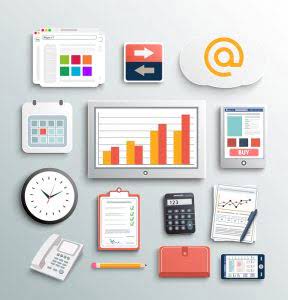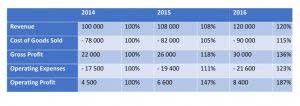
Our team of experts is here to provide you personalized support every step of the way. Console ltd is planning for expansion in upcoming years, and for the same, they need to purchase machinery costing $54 million. So they have hired a financial advisor who shall advise them on how to proceed upon the same that is getting funds and not impacting their stock price much.
- Some examples of what a product costs include, direct labor, raw materials, manufacturing supplies, and overhead that is directly tied to the production facility, such as electricity.
- By using TranZact’s inventory and period costs calculator tools, businesses can manage the challenges of financial management.
- By controlling Period Costs and optimizing spending, businesses can improve their bottom line profitability, increase cash reserves, and enhance overall financial stability.
- Every cost incurred by a business can be classified as either a period cost or a product cost.
- Once the inventory is sold or otherwise disposed of, it is charged to the cost of goods sold on the income statement.
Indirect Allocation

Then in upcoming years, they need to take the interest expense to profit and loss statement. If the amount produced increases, the fixed bookkeeping cost per item decreases, and vice versa. Explore our marketplace and find the perfect tool to streamline your processes today. Looking to streamline your business financial modeling process with a prebuilt customizable template? Say goodbye to the hassle of building a financial model from scratch and get started right away with one of our premium templates.
Historical Expenses

Tracking period costs will also help a business balance its budget and gain savings. Period costs take from the revenue of a company during that accounting period and thus will have an impact on the net income for that period. Period costs are only reported on the income statement for the period in which they are used up or incurred. So, it is only for that accounting period https://www.bookstime.com/tax-rates/new-york that period costs will reduce the net income. While overhead costs can be a type of period cost, not all period costs are considered overhead. Overhead costs are costs incurred in the manufacturing process while period costs are not tied to the production process.
Examples of Period Cost Examples

Choosing the appropriate method of allocating Period Costs depends on factors such as the nature of the business, the complexity of operations, and the availability of data. By implementing effective cost allocation methods, businesses can gain insights into their cost structure, enhance decision-making capabilities, and ultimately drive sustainable growth and profitability. By leveraging Period Cost data in decision-making processes, businesses can enhance operational efficiency, mitigate risks, and achieve sustainable growth and profitability in the long term. Effective management of marketing expenses involves aligning marketing strategies with business objectives, measuring campaign performance, and optimizing marketing spend to achieve the desired outcomes. period costs The main characteristic of these costs is that they are incurred over a period of time (during the accounting period).
Liabilities are normally things that are settled over time through the transfer of money, goods, or services. Liabilities can either be short-term obligations that are due within one year of a normal accounting period, or they can be long-term liabilities and are not due for more than one accounting period. By definition, period costs are costs that are incurred during one accounting period and are not tied to the production of a product or the inventory costs. If liability is short-term and due within one accounting period and is not directly tied to the production of a product or inventory costs, then it could be considered a period cost.
Such cost classifications have been proven useful to people, like most analysts who develop several costs, classifying them per their uses in various managerial applications. Identifying and categorizing these costs is important as different purposes require different cost constructs. Led by editor-in-chief, Kimberly Zhang, our editorial staff works hard to make each piece of content is to the highest standards. Our rigorous editorial process includes editing for accuracy, recency, and clarity.